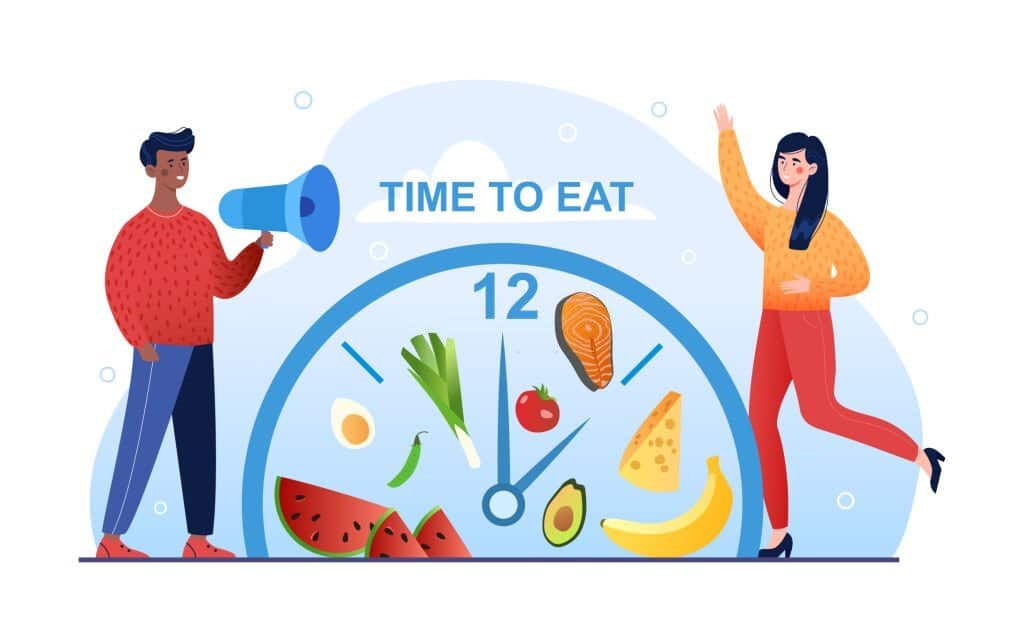One of the most popular fasting protocols today is Alternate Day Fasting (ADF). This protocol alternates between days where you fast and days where you eat a calorie-restricted diet.
The idea behind Alternate Day Fasting (ADF) is that it can help make extended fasts easier to handle by giving your body a break from famine once every 24 hours.
Many people who follow ADF believe this will lead to better compliance (e.g., you're not fasting every single day) and increase fat loss results (e.g., because you're restricting your calories for less time every day).
ADF is gaining popularity among many health enthusiasts as a way to accelerate weight loss and metabolism, improve insulin sensitivity, and have greater control over hunger pangs.
There are several variations of the ADF regimen out there. Still, the general premise remains the same: On fast days, you must consume less than 25% of your normal daily caloric intake, and on feed days, you can eat whatever you like within reason.
Read on for an in-depth explanation of how to get started with alternate-day fasting.
What to Know Before You Start
One of the most important things to keep in mind before you start fasting is to stay hydrated.
During fasting, your body will release more water than normal as it is metabolized. As such, you need to ensure you are drinking plenty of fluids to replace what you are losing.
While essential for general health, the nutrients and vitamins you get from fruits and veggies won't be as readily available to your body while you are fasting.
While some of these vitamins are stored in your body, others will be excreted if they aren't needed immediately.
In addition, minerals like magnesium and potassium will be excreted in higher amounts, leading to deficiencies if not replaced.
Fasting can be a form of mental and emotional stress, which can lead to feelings of melancholy and irritability. Examples of this can be seen in people who have recently gone through death or divorce and people who are trying to go on a diet.
This is because the stomach produces ghrelin, a hormone that triggers hunger. When you are fasting, your ghrelin levels increase because your stomach is empty and needs to be filled. If you don't eat, your ghrelin levels will increase, even more, causing you to feel hungrier.
How to Do Alternate Day Fasting: A Step-By-Step Guide
ADF is not as intense as some other fasting methods like the 5:2 diet or the Warrior Diet because it involves a single, extended fast for one day per week. The remaining six days are spent eating normally, followed by another single fast day the following week.
ADF is a type of intermittent fasting that entails alternating between a normal eating schedule and a fasting schedule.
In most cases, you will eat regularly for five days and fast for two days per week, but you can adjust the ratio based on your personal needs. You can also fast for as long as you want, but most people fast for about 24 hours.
Since ADF involves alternating between fasting and eating regularly, it's a lot easier to follow and has fewer health risks than continuous fasting.
To reap the most benefits from alternate day fasting, try to follow the standard schedule of regularly eating five days per week and fasting two days per week.
If you've never done ADF before, it's important to understand that there are several differences between the ADF version and a one-day fast.
- First, you'll be fasting for two days.
- Second, you must consume less than 25% of your normal daily caloric intake on fasting days.
- Third, on feed days, you can eat whatever you like within reason.
For many people, starting the fast on the weekend or on a day when you have a lighter schedule is easy. Once you get used to fasting for two consecutive days, you can also add fasting days during the week.
While there's no one way to do ADF, most people follow these general guidelines:
On fasting days, consume less than 25% of your normal daily caloric intake by lunchtime.
It's best to have one last meal before noon to ensure you have enough time to digest before the fast begins.
On feed days, consume your normal daily caloric intake.
You can follow the same meal plan on both days or plan your fast days around low-calorie, high-nutrient foods that are easy to digest, while your feed days can be used as a “reward” where you can eat whatever you like.
Three Ways to Fast on Alternate Days
Depending on your personal preferences and lifestyle, you can choose one of the following three ways to fast on your non-eating days:
16/8 Fast
For this fast, you consume no calories for 16 hours and then eat all of your calories during an 8-hour window. For example, if you're a beginner, you would start fasting at 10 am and stop at 6 pm.
24/0 Fast
On this fast, you consume no calories for 24 hours without any break. This is risky for beginners, so make sure you consult with your doctor before starting this fast.
5/2 Fast
On this fast, you consume no calories for 2 days every week and then eat all your calories for the remaining 5 days. You can choose any 2 days of the week for your fast days.
No matter which way you choose to fast, make sure you are drinking plenty of water and eating nutritious snacks like nuts and seeds.
Challenges of Doing ADF and How to Overcome Them
The hardest part of alternate day fasting is getting used to it, which is true for all types of fasting. However, if you follow a proper schedule and prepare yourself mentally, you will get used to it after a while.
You can also ease into it by starting with one fast day per week and slowly increasing to two or three fast days.
Another challenge is getting the right balance of macronutrients.
On fasting days, you need to make sure that you don't eat too little, but also make sure you don't eat too much.
If you're eating healthily on non-fasting days, you should be fine, but you should try to avoid overeating so that you don't gain weight during the week.
Benefits of Doing Alternate Day Fasting
There are many benefits to doing ADF, including reduced risk of chronic diseases, improved insulin sensitivity, and improved mental health. Let's take a closer look.
- Healthy weight loss: AADF is an excellent way to lose weight and reduce body fat. It allows you to eat fewer calories while still meeting your nutritional needs.
- Better metabolism: Your metabolism is your best friend if you're trying to lose weight. It helps you burn more calories and keeps your energy levels stable.
- Better cognitive health: Intermittent fasting has been shown to improve cognitive health in many ways, including reduced risk of Alzheimer's and improved memory.
Frequently Asked Questions
Q. Does ADF really work?
A. Studies show that most people who follow ADF lose weight, though the results vary depending on many factors, including the person's weight, age, and gender. It's important to note, however, that not all studies agree that ADF leads to better results than other types of fasting.
Q. How should I start ADF?
A. Start with a 5:2 schedule, which involves consuming 25% of your normal caloric intake for two consecutive non-consecutive days per week, then move on to a 24-hour fast once you feel comfortable with the 5:2 schedule.
Q. Why does the fast last for two days? Wouldn't one day of fasting be sufficient?
A. Two days of fasting is better than one. During a single day of fasting, your body has to “break” the fast. But the following day, your body still has to “wait” for the next day's nutrients. So that's two days of no “waiting” in between. This is a less stressful way to go about fasting.
Q. Is there a difference between men and women when it comes to ADF?
A. Yes, research shows that women may experience better results with ADF than men.
Q. Can I follow other types of fasting while doing ADF?
A. Yes, you can do any type of fasting while doing ADF. Be aware, though, that if you are fasting for longer than 36 hours, you may need to adjust your caloric intake.
Bottom Line
Overall, ADF can help you lose weight and improve your general health, though the results vary depending on the person.
It's important to remember that not all studies agree that ADF leads to better results than other types of fasting, so you may want to experiment with different protocols to see what works best for you.
That said, ADF can be a useful tool for weight loss and general health improvement, as long as you follow the tips for successful fasting and take care of your body.






